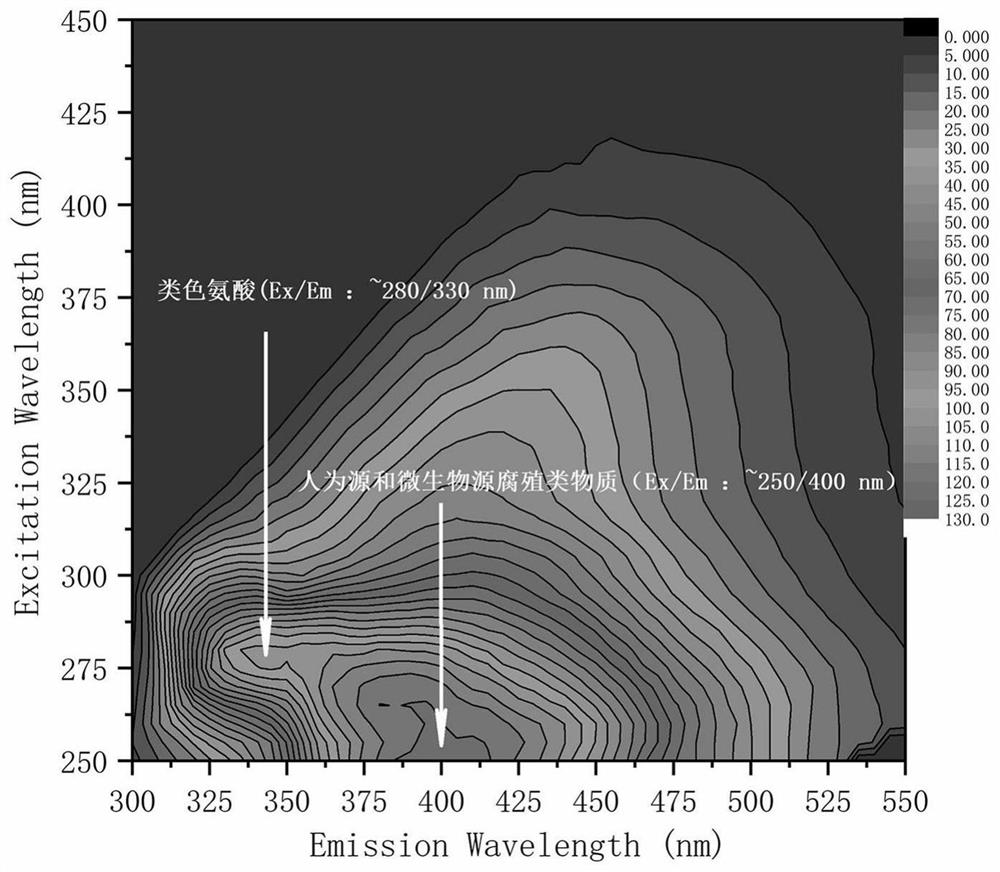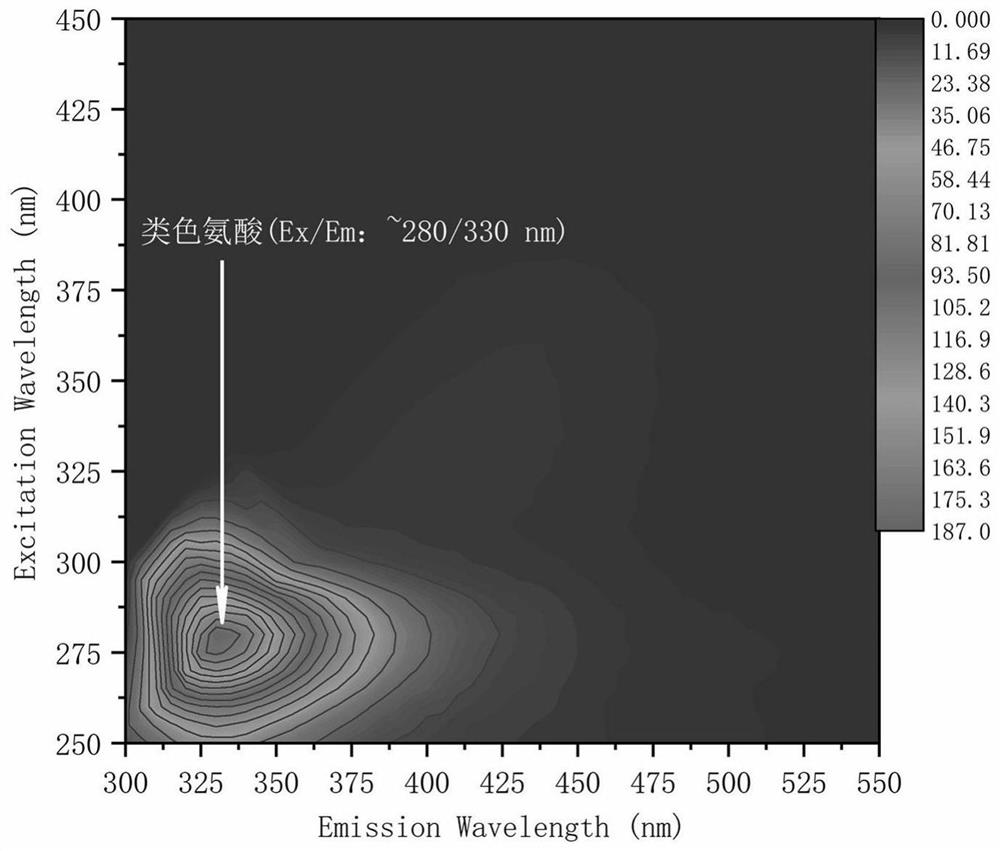Method for quickly judging whether rainwater enters sewage inspection well
A technology for inspecting wells and sewage, applied in measuring devices, instruments, fluorescence/phosphorescence, etc., can solve the problems of high economic cost, difficult to determine, the influence of water usage and living habits, etc., to achieve simple pretreatment and measurement operations, Easy to collect and carry, the effect of large-scale project application prospects
- Summary
- Abstract
- Description
- Claims
- Application Information
AI Technical Summary
Problems solved by technology
Method used
Image
Examples
Embodiment 1
[0050] Collection of water samples: The collection point of water samples is a residential area where rain and sewage are not completely separated. It is collected three times at a quarter depth below the water surface, each collecting 10mL.
[0051] Sample pretreatment: Mix the water samples collected three times evenly, filter with a 0.45 μm filter membrane, and dilute the DOC concentration of the water samples to below 5.0 mg / L.
[0052] Three-dimensional fluorescence spectrum measurement: perform three-dimensional fluorescence spectrum detection on the sample. The three-dimensional fluorescence spectrum scanning excitation wavelength range is set to: 250nm-450nm, the emission wavelength range is set to: 300nm-550nm, the scanning speed is 12000nm / min, the scanning wavelength step size of excitation and emission is 5nm, the slit width is 5nm, and the response Time 0.002s. The three-dimensional fluorescence spectrum of the water sample was obtained.
[0053] Spectrum analy...
Embodiment 2
[0056] Collection of water samples: The collection point of the water samples is a confluent community, and the water samples are obtained from the same sewage inspection well in the dry weather and the initial stage of the rainfall; each of the above-mentioned water samples is collected three times at a quarter depth below the water surface , collect 15mL each time.
[0057] Sample pretreatment: Mix the water samples collected three times evenly, filter with a 0.45 μm filter membrane, and dilute the DOC concentration of the water samples to below 5.0 mg / L.
[0058] Three-dimensional fluorescence spectrum measurement: perform three-dimensional fluorescence spectrum detection on the sample. The three-dimensional fluorescence spectrum scanning excitation wavelength range is set to: 250nm-450nm, the emission wavelength range is set to: 300nm-550nm, the scanning speed is 12000nm / min, the scanning wavelength step size of excitation and emission is 5nm, the slit width is 5nm, and th...
Embodiment 3
[0062] Collection of water samples: The collection points of water samples are municipal roads with incomplete diversion, and the water samples are taken from the adjacent sewage inspection wells with no rainwater access and rainwater access at the beginning of rainfall; each group of water samples above is collected in A quarter of the water depth below the water surface was collected three times, each collecting 10mL.
[0063] Sample pretreatment: Mix the water samples collected three times evenly, filter with a 0.45 μm filter membrane, and dilute the DOC concentration of the water samples to below 5.0 mg / L.
[0064] Sample measurement: the sample is detected by three-dimensional fluorescence spectrum. The three-dimensional fluorescence spectrum scanning excitation wavelength range is set to: 250nm-450nm, the emission wavelength range is set to: 300nm-550nm, the scanning speed is 12000nm / min, the scanning wavelength step size of excitation and emission is 5nm, the slit width...
PUM
| Property | Measurement | Unit |
|---|---|---|
| diameter | aaaaa | aaaaa |
Abstract
Description
Claims
Application Information
 Login to View More
Login to View More - R&D
- Intellectual Property
- Life Sciences
- Materials
- Tech Scout
- Unparalleled Data Quality
- Higher Quality Content
- 60% Fewer Hallucinations
Browse by: Latest US Patents, China's latest patents, Technical Efficacy Thesaurus, Application Domain, Technology Topic, Popular Technical Reports.
© 2025 PatSnap. All rights reserved.Legal|Privacy policy|Modern Slavery Act Transparency Statement|Sitemap|About US| Contact US: help@patsnap.com



